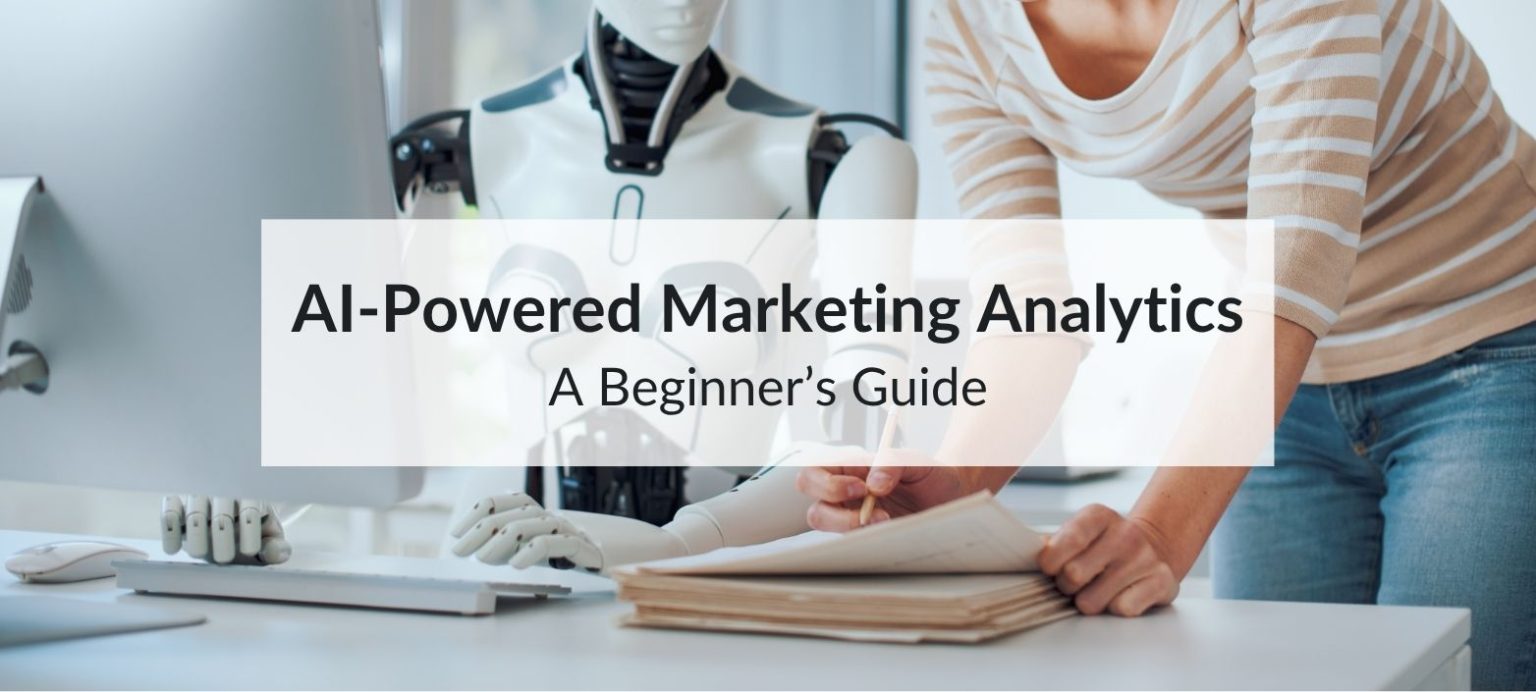AI-powered marketing analytics is changing how businesses approach decision-making. By automatically processing and interpreting large volumes of data, it allows teams to understand customer behaviour, evaluate campaign results, and spot upcoming trends without spending hours buried in spreadsheets.
While the concept may sound complex, its purpose is straightforward: to help marketers answer three key questions, What happened? Why did it happen? And what should we do next?
For beginners, it’s not about mastering algorithms, but about using smarter tools to make more confident, data-driven decisions.
Table of Contents
What Is AI-Powered Marketing Analytics?
It refers to using artificial intelligence to collect, process, and interpret marketing data. This includes website traffic, email engagement, social media performance, advertising ROI, and customer segmentation.
Instead of manually building reports, AI tools identify trends, predict outcomes, and suggest actions, often in real time.
Example: Predicting Campaign Success
A digital team launches two paid ad campaigns. An AI analytics tool compares performance, learns from similar past campaigns, and predicts which one is more likely to succeed. It then suggests reallocating the budget automatically.
Platforms like PaveAI and Crimson Hexagon do just that by turning raw analytics into readable, actionable summaries.
Key Benefits for Marketing Teams
1. Better Customer Understanding
AI can segment audiences more intelligently based on browsing habits, purchasing behaviour, and even tone of communication. This allows marketing teams to personalise offers, emails, and retargeting ads with much higher accuracy.
2. Real-Time Reporting
Traditional analytics dashboards require manual refreshing and interpretation. AI tools surface insights instantly and even alert users to unusual behaviour such as a sudden drop in conversion rate or a spike in bounce rate.
3. Smarter Budget Allocation
By reviewing past spend and performance data, AI analytics platforms can suggest where to spend more and where to cut back. This improves return on ad spend (ROAS) and prevents waste.
Common AI Tools in Marketing Analytics

Some of the most beginner-friendly platforms include:
- HubSpot: Offers AI-driven insights across email campaigns, web traffic, and lead scoring
- Google Analytics 4: Features predictive audiences and AI alerts
- Ortto: Combines customer journeys with predictive analytics in a simple interface
- Zoho Marketing Plus: Includes AI assistant Zia for forecasting and smart campaign insights
Each of these platforms uses machine learning to improve the accuracy and relevance of the insights they generate over time.
Where Beginners Often Go Wrong
1. Relying on AI Without Business Context
AI tools can suggest a change, but they won’t always understand your business goals. For example, if a model suggests cutting a campaign that’s gaining awareness but not conversions, that advice might not align with your strategy.
2. Ignoring Data Quality
The quality of your results depends on the quality of your data. Incorrect tracking, duplicated events, or outdated tags can mislead even the smartest algorithms. A regular audit of data sources is essential.
3. Automating Too Early
It’s tempting to automate reporting from day one, but it helps to understand the fundamentals first. Marketing teams should start by exploring raw metrics before leaning on AI-generated summaries.
A Balanced Approach
AI-powered marketing analytics works best when paired with human insight. It’s not about replacing marketers, but empowering them. Professionals who understand their customers and marketing goals can use AI as a support tool to:
- Uncover new opportunities
- Improve campaign precision
- Save time on reporting
This human-AI partnership leads to better strategies, faster execution, and fewer missed opportunities.
Getting Started
If you’re new to AI-powered marketing analytics, start with tools you’re already using. Many platforms now come with built-in AI features:
- Google Analytics 4 offers automatic insights and predictive metrics.
- HubSpot uses AI to suggest subject lines, email content improvements, and lead scoring models.
As you gain confidence, explore more advanced tools like customer journey mapping or AI-based attribution models.

Pro Tip: Before picking a platform, write down the top 3 questions you need answered every week, like:
- What channel brought the most leads?
- Why did engagement drop last Tuesday?
- What content is generating the most sales?
Then, choose a tool that answers those questions clearly and efficiently.
FAQs: AI-Powered Marketing Analytics
Q1: Do I need technical skills to use AI-powered marketing analytics?
Not necessarily. Many tools are designed for non-technical users with intuitive dashboards and visual insights. You don’t need to code, just understand your goals and metrics.
Q2: How does AI improve traditional marketing analytics?
AI automates data analysis, provides real-time recommendations, and uncovers hidden patterns, which would be time-consuming or impossible to find manually.
Q3: What’s the best AI-powered marketing analytics tool for small businesses?
Google Analytics 4 and HubSpot are popular starting points for small businesses because they offer built-in AI features without requiring custom setups.
Q4: Can AI predict future marketing performance?
Yes. Many tools use predictive analytics to estimate future behaviours like conversion likelihood, churn risk, and campaign success probability.
Q5: Is my data safe when using AI analytics platforms?
Reputable platforms follow data privacy regulations like GDPR and CCPA. Always review a provider’s data policy and choose platforms that offer secure data handling.
Final Thoughts
Marketing decisions shouldn’t be based on hunches. With the right tools, you can spot patterns, react quickly, and focus on what truly drives results. Start with what you already use, ask better questions, and let the insights guide your next steps.
Final Tip: Before choosing a platform, list the top 3 questions you want answered every week, e.g., What channel brought the most leads? Why did engagement drop last Tuesday? What content is generating the most sales? Choose tools that answer those clearly.

